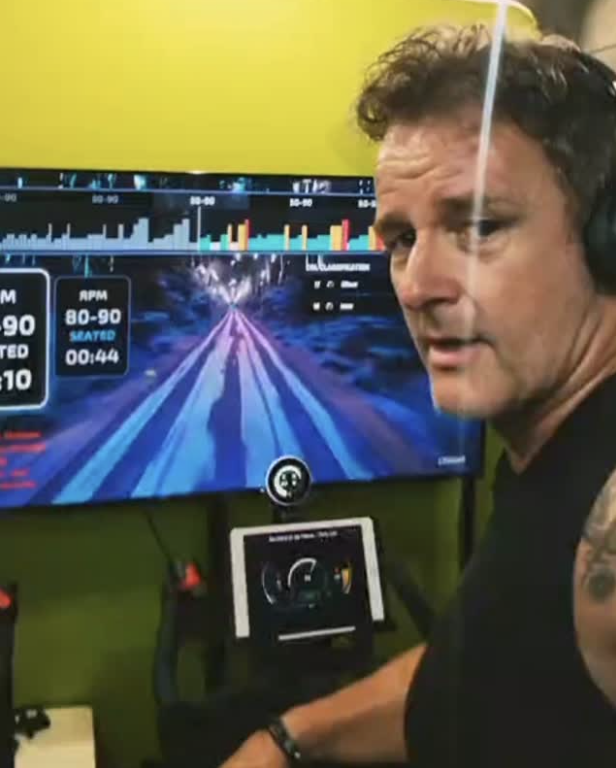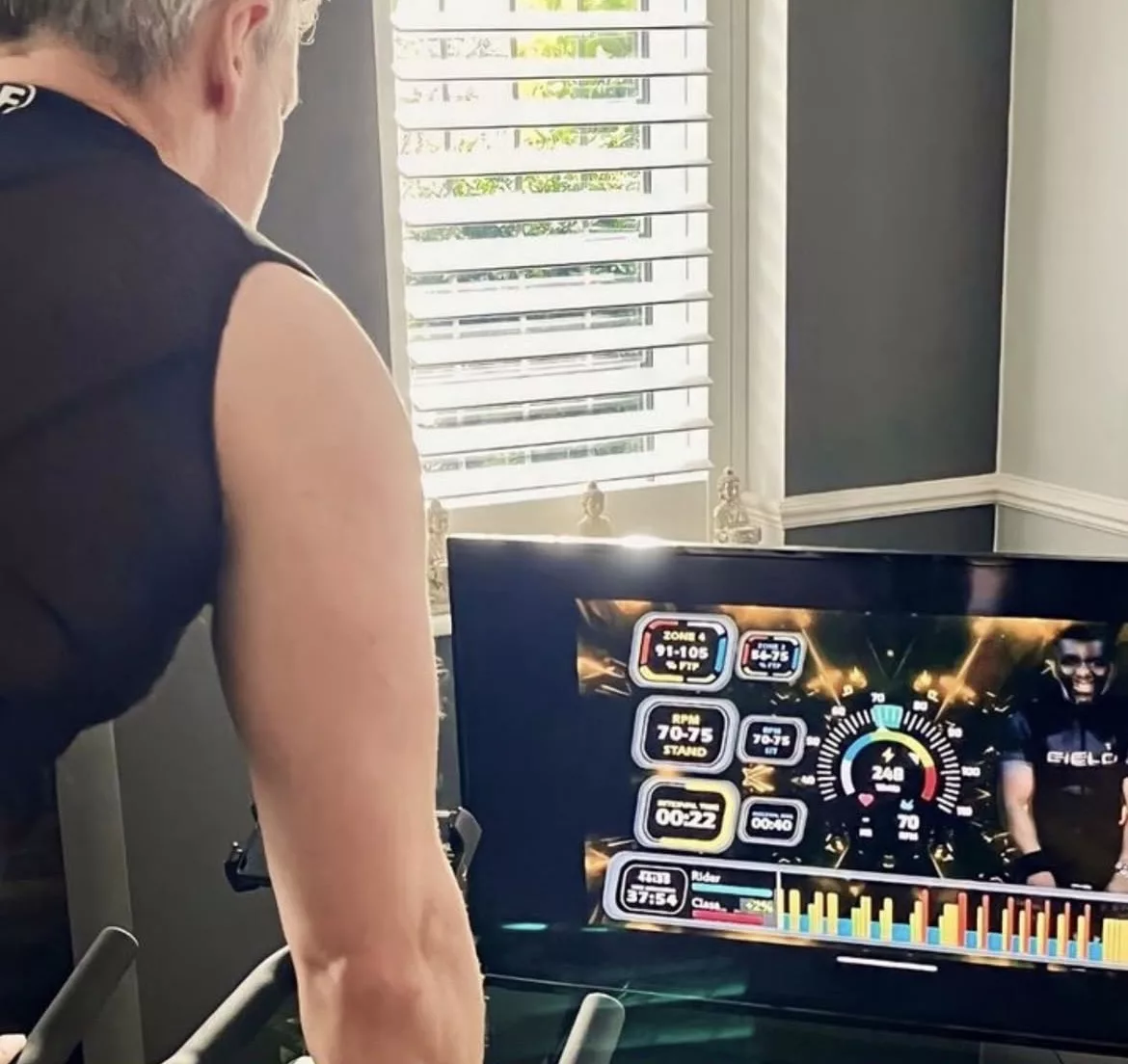For those who don’t know, indoor cycling appeared at the beginning of the 1990s. It was adopted globally and introduced into most fitness venues and gyms, quickly becoming one of the most popular and well-attended group exercise activities. The reason for this was its accessibility. Anybody of any age, gender, or ability could get on a bike, pedal to the music, adjust the resistance, and enjoy the immersive atmosphere created by great music and great instructors and achieve some level of aerobic cardio fitness.
Have you got two left feet? It doesn’t really matter on a bike, because your feet are clipped in and can only move in a linear motion, so basically anyone can ride a bike. From this base level, indoor cycling (or spinning) grew and grew.
Since then, we have seen sound visualiser lighting systems and concert-quality sound systems in studios to try and optimise the immersive experience of a spin class, turning it into an all-out assault on the senses in an effort to validate the return on investment of your time in the class, and, in some cases, even the membership of a boutique indoor cycle studio.
For some people, the rhythm-based immersive experience is primarily what they are looking for, and that is perfectly fine. But over the last 15 years, we have seen a revolution in health and fitness centred around the physiology and biomechanics of the human body, and the measurable metric data we output during exercise. This enables us to set specific targets, monitor progression, and show improvement.
Cycling has been front and centre of this revolution due to its unique ability to accurately calculate, from riding a bike, the value of the body’s most valuable measurable metric: Power.
It was only natural, then, that indoor cycling would begin to adopt this technology and employ classes based around targeted intervals, defined by power output at certain RPM ranges. Instructors could now really relate the “indoor cycling” experience to the outdoor one that many of us enjoy, and that relationship validated spin classes as more than just “dancing on the bike.”
The worldwide boom in tracking steps, sleep patterns, and heart rate meant that even the most ardent rhythm riders had their eyes opened to the value of data to optimise fitness progression and reach their goals. Many began gravitating towards connected data to give them feedback during and after classes. That’s not to say they didn’t still want the banging dance tunes and nightclub lighting, but now they were collecting data and riding more structured sessions.
This data revolution wasn’t limited to indoor cycling. Wearables such as smartwatches and heart rate monitors gave feedback on almost every form of exercise, and nearly every piece of gym equipment became capable of connecting and guiding activity. But the vast majority of this connectivity was centred around heart rate monitoring, the body’s reaction to energy expenditure. It was only indoor cycling that uniquely gave access to the actual measurement of that energy expenditure in the form of power.
So all we need is the ability to measure power and ride a structured profile, right?
Well… no, it’s not quite that easy. For power training to be successful you need a lot of knowledge about the human body. And then there are the obvious issues regarding group exercise.
All those gym goers measuring their heart rate on a treadmill or a stepmill are doing this individually. Indoor cycling, however, is done as a group. Going back to my first point, where anyone of any age or ability can achieve good results together, once you add data and display it on a big screen, you need to level out disparities between ages, genders, and abilities to make the class fair and engaging for all participants.
And there, ladies and gentlemen, lies the quandary: it’s not easy to do.
FTP: the magical figure
In cycling, we have a magical figure called FTP, Functional Threshold Power. FTP is essentially the maximum average power a rider can output for around an hour.
This doesn’t mean turning the pedals over at a moderate pace for 60 minutes. It’s a test to find the absolute limits of your body’s ability to produce power over time.
Once you find this figure, it’s gold dust. You can create profiles that target specific areas of your fitness to maximise results in less time. FTP allows us to access different energy systems at different RPMs, increasing the body’s ability to produce power and recover from effort. Classes can then be designed with RPM and intensity combinations that guarantee results, if ridden precisely.
Sounds great, doesn’t it? Especially if an instructor can mix music that flows perfectly with the intervals to create that immersive, emotional connection to the ride. Add in lighting effects and you’ve got the holy grail of indoor cycling: a great workout, a great soundtrack, and a fantastic sensory experience. Afterward, you can check your data in the café and see that you achieved exactly what you set out to do.
However… getting that FTP is a bit of a bugger.
The ultimate FTP test is a 1-hour, flat-out, “do or die” ride. Recovery takes around two weeks, so not an activity most gym goers would queue up for. To make it more accessible, shorter tests were created with adjusted FTP calculations. But the problem is: how short is short enough?
20-minute tests still hurt like hell, 5-minute or 3-minute tests don’t give the physiological experience needed to return a correct FTP figure, and none of them are particularly enjoyable.
This FTP problem has always been a huge barrier to bringing data into indoor cycling as a valid group training concept. Many bike manufacturers have tried, and many gyms do adopt FTP-based programmes, but the investment in educating instructors and riders, and maintaining that standard, is exhausting. And FTP isn’t static: go on holiday for two weeks and your FTP can drop 10–15%.
So how does a digital concept keep up with this and always give you the correct FTP?
This is where Ciclo was born.
At the heart of the Ciclo project was the need to give riders a valid FTP figure without ever forcing them to test for it.
Stage 1: Onboarding FTP
When developing Ciclo, I had a unique advantage: I had conducted thousands of FTP tests on hundreds of riders of all ages, genders, and abilities. And, being me, I had kept all that data. Boxes and boxes of it.
With the help of world-class developers, we collated it into an enormous spreadsheet and built an algorithm. This allowed us to assign an FTP figure to any new rider onboarding into Ciclo that would be within 10–15% of their actual FTP, a remarkable start point.
There were anomalies, mostly experienced cyclists who outperformed the model, but these were a small percentage. And in those cases we were underestimating FTP rather than overestimating, which is much safer.
Stage 2: Adaptive FTP
The real magic of Ciclo comes from the way we conduct classes. Every single session monitors every single interval, its zone, its RPM, its intensity, and compares it with the rider’s own physiology.
Adaptive FTP (AdFTP) measures every pedal stroke, every 40 milliseconds, and uses a complex algorithm to determine whether you are outperforming or underperforming. During the class, it makes subtle increases or decreases to your FTP in real time, until it finds your true level.
In effect, every session you ride with Ciclo becomes your FTP test.
After a 45-minute session of varied intervals, you’ll unknowingly have completed a full FTP assessment, but one that’s three-dimensional, capturing all RPM ranges and intensity types. The result? An incredibly accurate FTP figure to use in future classes.
This ensures that the intensity of your sessions, whether chosen by you or your instructor, always matches your ability and targets specific physiological benefits. It’s the fastest way to improve, recover, and achieve results.
Adaptive FTP is mandatory for your first class after onboarding into the Ciclo Rider app, whether at home or in a studio. After that, it can be switched on for any ride. Instructors can even programme specific AdFTP sessions monthly to keep riders’ FTP values updated.
If you’ve been on holiday, or had a break due to illness or injury, AdFTP will immediately adjust your FTP within a class, so you return to training safely at the right level, not discouraged by numbers you can’t yet hit.
A landmark innovation
We’ve just released the latest version of Ciclo with Adaptive FTP included for all riders. Download the app and you’ll get 30 days’ free access to try it yourself.
I genuinely believe this is one of the most important innovations in indoor cycling for many years.
It’s easy to say “we know power.” But unless you can apply that knowledge to the everyday riders in your class, it doesn’t mean much. Power training has often been too complex, too technical, and too intimidating to roll out successfully in gyms.
Ciclo takes all of that out of your hands. Get on the bike and ride, let the tech do everything for you. That’s the thought process behind Ciclo, and it’s the path we’re taking as we push innovation to new levels.



